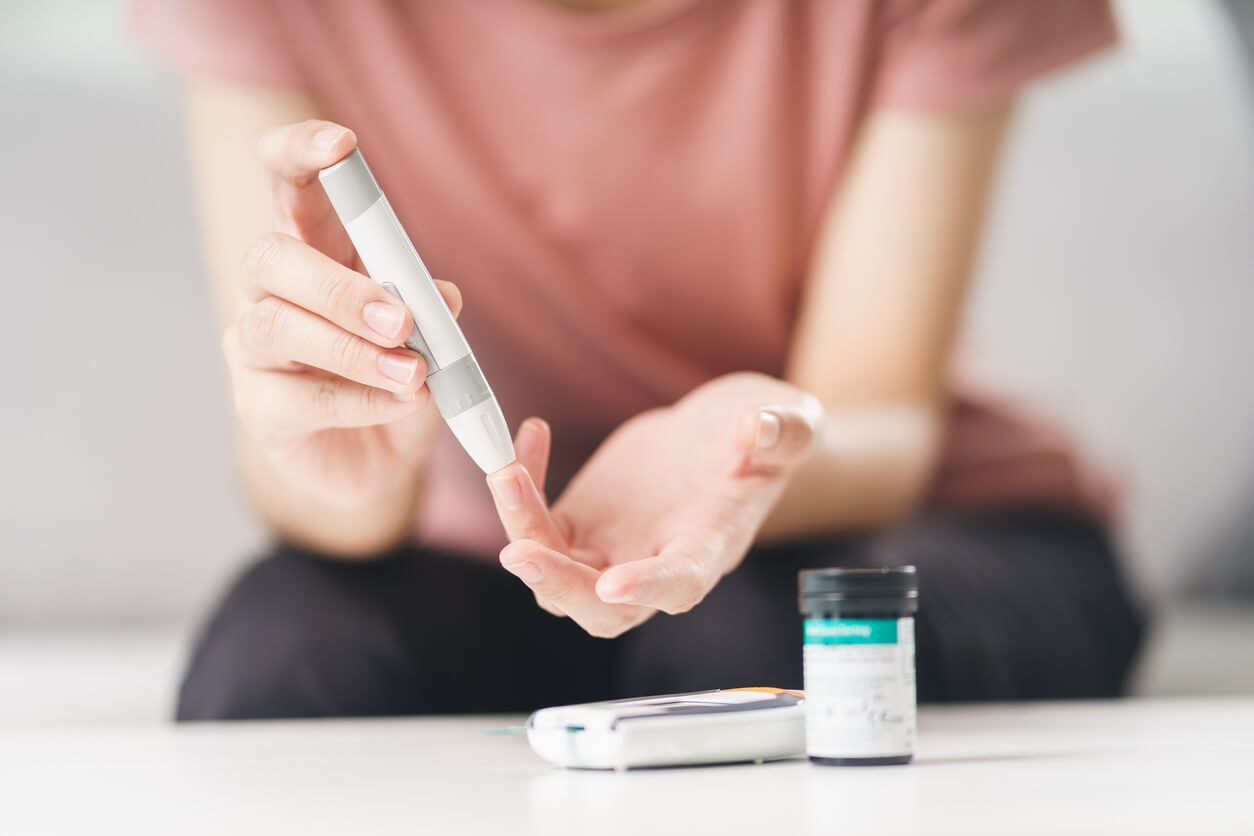Type 1 Diabetes: Causes, Symptoms, and Treatment
A comprehensive guide to type 1 diabetes
Diabetes is a group of diseases that affect millions of people globally. In the United States, 37.3 million people manage diabetes, which equates to about 11.3% of the population. It is also becoming more common. Research from the CDC shows that diagnosed cases of type 1 and type 2 diabetes are surging among people under 20; diagnoses for type 1 diabetes increased by 45%, while diagnoses for type 2 diabetes increased by 95%.
Type 1 and type 2 diabetes have marked differences in their causes, symptoms, and the treatment options needed to manage the disease. In this article, we’ll provide an overview of type 1 diabetes and what sets it apart from other forms of diabetes.
Type 1 Diabetes Causes
Type 1 diabetes – also known as insulin-dependent diabetes – is fundamentally an autoimmune disorder, which means that the immune system mistakenly targets and destroys healthy cells in the body. The exact trigger for this autoimmune response is not fully understood, but it is thought to involve a combination of genetic and environmental factors.
On a molecular level, type 1 diabetes is caused by the immune system mistakenly targeting and attacking the insulin-producing beta cells in the pancreas, ultimately destroying them. This autoimmune assault results in a severe deficiency of insulin in the body.
Insulin is a hormone that regulates blood sugar levels by facilitating glucose uptake from the bloodstream into cells, where it can be used for energy. Without sufficient insulin, blood sugar levels rise uncontrollably, leading to hyperglycemia, which can cause several serious health complications. This destruction of beta cells and the resulting insulin deficiency are central factors in developing type 1 diabetes, necessitating external insulin replacement through injections or insulin pumps to manage the condition.
Type 1 Diabetes Risk Factors
Genetics plays a significant role in the development of type 1 diabetes. People with a family history of the disease have a higher risk of developing it themselves. Specific genes, particularly those within the Human Leukocyte Antigen (HLA) complex, are associated with an increased susceptibility to autoimmune diseases like type 1 diabetes. However, having these genes does not guarantee that an individual will develop the disease.
Viral infections, particularly during childhood, have been linked to an increased risk. Certain viruses may trigger the immune system in a way that leads to the autoimmune destruction of beta cells. Environmental toxins like arsenic and selenium have also been linked to the increase in diabetes prevalence.
In addition, dietary factors may play a role in the development of diabetes. Research has explored the potential impact of early childhood diet on the risk of developing type 1 diabetes. Some studies suggest that the timing and nature of foods introduced to infants may influence their susceptibility to the disease. For example, the early introduction of solid foods or the consumption of cow's milk during infancy has been associated with a slightly increased risk in some studies. However, these findings are not conclusive, and more research is needed.
Ongoing research aims to unravel the precise causes and mechanisms of type 1 diabetes to develop strategies for prevention and treatment.
Type 1 Diabetes Symptoms
The symptoms of type 1 diabetes generally begin at an early age. They are often relatively mild as they first appear, becoming more intense as the disease progresses.
Common symptoms include:
- Frequent and excessive thirst
- Excessive hunger
- Frequent urination
- Bed-wetting in children
- Sudden and unexplained weight loss
- Mood changes or irritability
- Fatigue
- Blurred vision
Type 1 Diabetes Complications
When the disease is carefully managed, patients can avoid severe complications caused by type 1 diabetes. However, several million cases of type 1 diabetes go undiagnosed. Diagnosed or not, type 1 diabetes has the potential to seriously damage internal organs and other vital functions of the body.
Complications caused by type 1 diabetes include:
Diabetic Ketoacidosis (DKA): A life-threatening condition that can occur when blood sugar levels become extremely high, producing ketones in the blood, which can cause nausea, vomiting, dehydration, and even coma.
Cardiovascular Complications:
- Atherosclerosis: Narrowing of blood vessels due to plaque buildup, increasing the risk of heart attacks and strokes.
- Hypertension: High blood pressure can strain the heart and blood vessels, leading to severe complications or death.
Eye Complications (Diabetic Retinopathy): Damage to the blood vessels in the retina, leading to vision problems and potentially blindness. Diabetes can also lead to the development of other vision problems, such as cataracts and glaucoma.
Kidney Disease (Diabetic Nephropathy): Damage to the kidneys' filtering units, potentially leading to kidney failure.
Neuropathy (Nerve Damage):
- Peripheral Neuropathy: Numbness, tingling, and pain in the extremities.
- Autonomic Neuropathy: Affecting the nerves that control vital functions, leading to digestive, urinary, and cardiovascular issues.
Foot Complications:
- Ulcers: Slow-healing sores on the feet that can become infected.
- Peripheral Arterial Disease: Reduced blood flow to the legs and feet, increasing the risk of infections and the need for amputations.
Skin Complications: People with diabetes may be more susceptible to skin infections and conditions, such as bacterial or fungal infections and diabetic dermopathy.
Complications in Pregnancy: Women with type 1 diabetes may experience complications during pregnancy, including gestational diabetes, preeclampsia, and an increased risk of congenital disabilities.
Early detection and intervention are crucial to minimizing the impact of these complications on the overall health and quality of life of individuals with type 1 diabetes. It’s important to note that diligent management of type 1 diabetes significantly reduces the risk of developing complications.
Type 1 Diabetes Diagnosis
A blood test called a hemoglobin A1c test is used to diagnose type 1 diabetes definitively.
Hemoglobin A1c Lab Tests, also called A1c or HbA1c, is a test that measures the average amount of blood sugar (also called glucose) attached to your hemoglobin over the past three months. Hemoglobin is a protein in your red blood cells that carries oxygen throughout your body.
The results of an A1c test are given as percentages. These correspond to your blood sugar levels.
- Below 5.7%: A1c levels below 5.7% indicate healthy blood sugar levels. This means you are not currently at risk of developing diabetes.
- Between 5.7-6.4%: This range indicates prediabetes, a serious health condition. Prediabetes requires immediate treatment to manage blood sugar levels and prevent the development of type 2 diabetes.
- 6.5% or higher (after two separate tests): Blood sugar levels above 6.5% indicate that you have developed diabetes. Doctors will order two independent A1c tests to test dangerous blood sugar levels conclusively. If both tests return with blood sugar levels over 6.5%, they will begin treating you for diabetes.
For individuals already managing diabetes, doctors will aim to keep blood sugar levels under 7%. Blood sugar levels over 7% may require an adjustment in your treatment plan.
Type 1 Diabetes Treatment
Type 1 diabetes is a chronic autoimmune condition. It will not go away and requires treatment throughout the patient’s lifetime to prevent severe complications like those listed above.
Insulin Therapy
Insulin therapy—or insulin replacement—is the cornerstone of type 1 diabetes treatment. Insulin is administered via injections or an insulin pump to replace the hormones the body cannot produce. There are different types of insulin, including rapid-acting, short-acting, intermediate-acting, and long-acting, and the treatment plan often includes a combination of these to mimic the body's natural insulin secretion.
Rapid-acting insulin injections: Rapid-acting insulin injections start to work 15 minutes after administration and last two to four hours. In most cases, multiple doses of rapid-acting insulin are needed every day.
Rapid-acting insulin injections include:
- Insulin aspart (generic for NovoLog)
- Insulin lispro (generic for Humalog)
Short-acting insulin: Short-acting insulin starts to work 30 minutes after administration and lasts three to six hours. There are over-the-counter short-acting insulin options available for purchase. Talk to your health care provider about whether OTC medication is right for you.
Short-acting insulin injections include:
- Humulin R
- Novolin R
Intermediate-acting insulin: Intermediate-acting insulin starts to work two to four hours after administration and lasts about twelve to eighteen hours.
Intermediate-acting insulin injections include:
- Humulin N
- Novolin N
Long-acting insulin: Long-acting insulin is effective in the blood for twenty-four hours. These injections are usually administered daily and will start to work within several hours of administration.
Long-acting insulin injections include:
- Insulin detemir (generic for Levemir)
- Insulin glargine (generic for Lantus)
Insulin Pumps: Some individuals with type 1 diabetes opt for insulin pump therapy. These devices continuously deliver insulin throughout the day and can be programmed to provide additional insulin for meals or high blood sugar corrections when needed. Insulin pumps offer more flexibility than multiple daily injections.
Blood Sugar Monitoring
Regular monitoring of blood glucose levels is essential for managing type 1 diabetes effectively. People with diabetes often use blood glucose meters to check their levels several times daily. Continuous glucose monitoring (CGM) systems provide real-time data, helping individuals make timely insulin adjustments.
Carb Counting
Carbohydrates play a vital role in diabetes management as they directly impact blood sugar levels. Carbohydrates, along with proteins and fats, represent one of the three primary macronutrients in our diet and serve as the body's primary energy source.
During digestion, carbohydrates are broken down into glucose, which is then absorbed into the bloodstream, causing an increase in blood glucose levels, commonly called blood sugar.
Careful monitoring of carbohydrate intake is necessary to manage fluctuations in blood sugar. This is typically accomplished through a method known as carbohydrate counting. Carbohydrate counting helps individuals with diabetes estimate the amount of carbohydrates in their meals, enabling them to make precise adjustments to their insulin or medication doses as needed.
Healthy Lifestyle Adjustments
While no diet or amount of exercise can treat diabetes, maintaining overall wellness through healthy eating and physical activity is crucial for managing the condition.
Eat a diet that centers on fruits, vegetables, and whole grains. These foods are nutrient-dense and rich in fiber, which helps with glucose absorption and blood sugar control. Fiber also helps you feel full, preventing overeating that causes blood sugar spikes. Talk to your health care provider about the most effective diet for your caloric needs and stick to it to prevent complications.
Along with a healthy diet, exercise can help lower blood sugar levels and improve insulin sensitivity. Incorporating regular physical activity into the daily routine can be beneficial, but it must be balanced with insulin and carbohydrate adjustments to prevent hypoglycemia during and after exercise. Before starting an exercise routine, discuss the best forms of activity for you with your health care provider.
Managing type 1 diabetes is multifaceted and involves a combination of insulin therapy, blood sugar monitoring, healthy eating, regular physical activity, education, and support.
The goal is to achieve and maintain near-normal blood sugar levels to prevent acute and long-term complications while allowing individuals with type 1 diabetes to lead active and fulfilling lives. Diabetes management should be individualized, and close collaboration with healthcare providers is essential to tailor treatment plans to each person's unique needs and lifestyle.
If you have more questions or want to talk to a health care provider about your condition, book an online diabetes appointment on Sesame. These quick and affordable doctor visits allow you to discuss your treatment and get to the bottom of any concerns you may have regarding type 1 diabetes.









